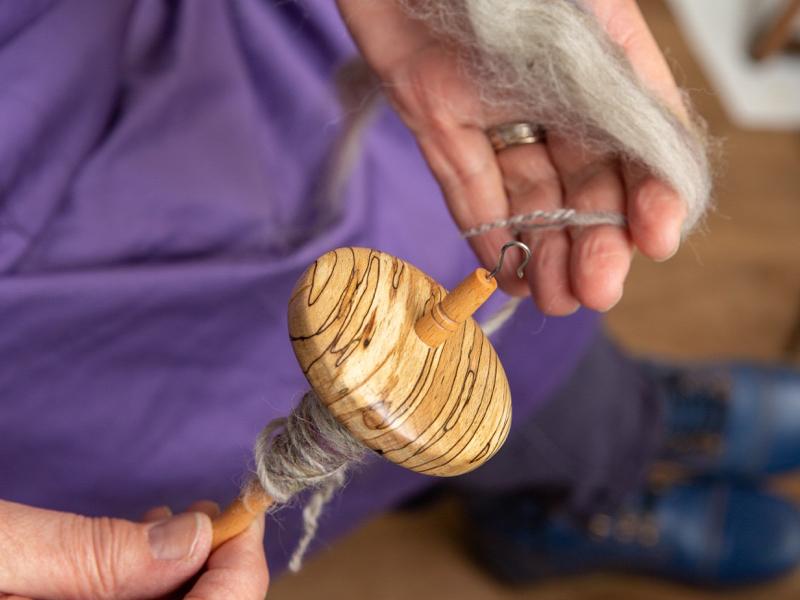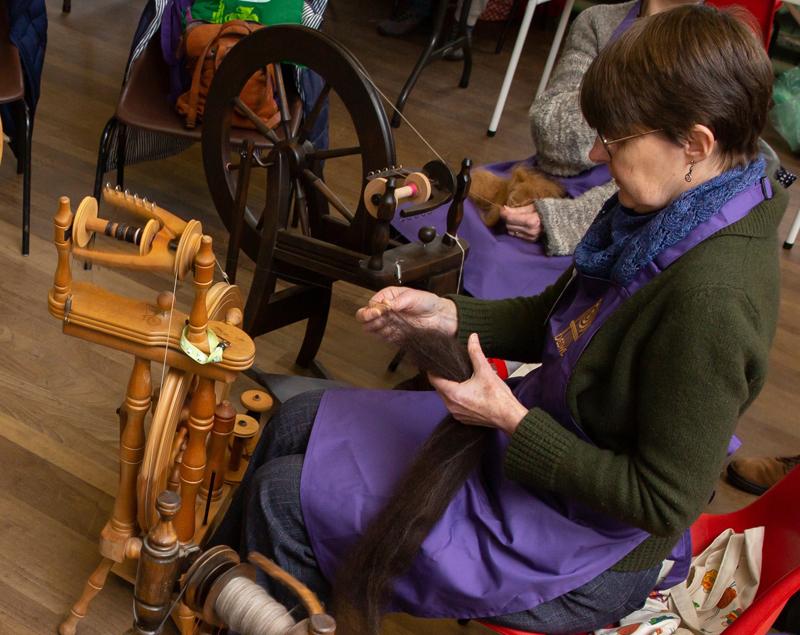.jpg)
Mrs Ann Evans, who still lives in Durham is one of the original band of five friends who founded the Durham Guild of Spinners, Weavers and Dyers and is proud to salute the continued success of the current three-dozen strong team.
“From those early beginnings we have produced some quite fantastic things and displayed our wares country-wide, including an exhibition of work in the cathedral’s Galilee Chapel which included woven braids. At the annual exhibition of the National Association of Guilds of Weavers, Spinners and Dyers in Leigh last summer the work of four of our members was on display,” said 88-year-old Ann.
.png)
It all started with a weekend tapestry weaving course at the DLI Museum in 1979 and then moved on to weekly WEA evening classes in the city. From there they continued to cultivate their interest by hiring a teacher to lead their weekly meetings and for a time, were supported by a professional tapestry weaver from Wales and enjoyed visits by other experts.
“The group grew steadily over the years and we were based in various venues within the city, becoming affiliated to the national association over 40 years ago and have been regular contributors to the annual exhibition,” said Ann, who owns two dozen weighted spindles.

The oldest in her collection is made of lead, found by an archaeologist near Yarm and dating back to the 12th or 13th century. Another is of Egyptian origin. The spindles are fashioned from a range of materials, including wood, stone and ceramics – although they have been known to be made from a potato or clay. The guild’s most popular spun material is mostly wool but flax, silk, bamboo, cotton, hemp and other fibres are all used in their weaving, knitting and crocheting.
The group meets once a month and also runs regular workshops which are open to members of the public.

The chairman of the guild, Mrs Diana Barclay, said: “The guild objectives are the promotion of public interest and education in the crafts of hand spinning and weaving and related textile crafts, alongside the development of techniques and equipment for the furtherance of our textile crafts. We are grateful to the city freemen for their generous £300 grant which will help realise our objectives”
--1920.jpg)
Eric Bulmer chairman of the Freemen’s Charitable Trust said: “The Freemen’s craft guilds are believed to date back to the early 14th century but the Weavers, founded in 1450 and the Dyers in the mid-17th century, have long been consigned to antiquity.”
All image by Geoff Kitson Photography - https://geoffkitsonphotography.co.uk/
